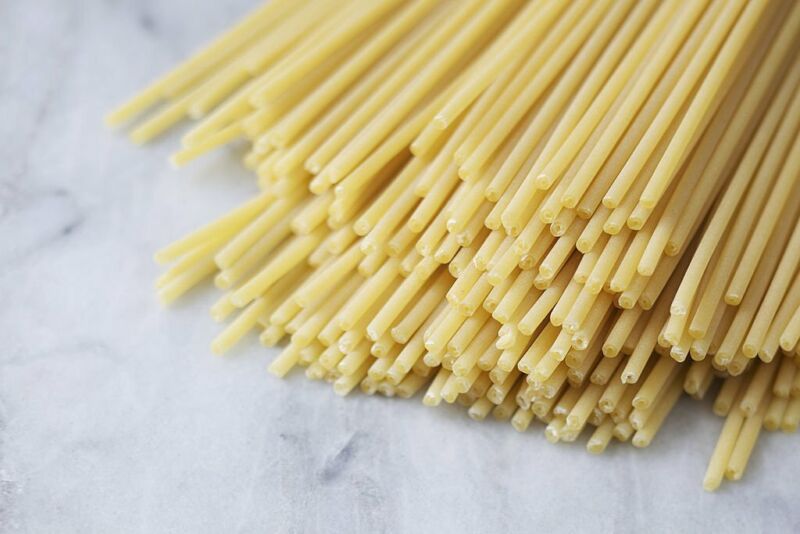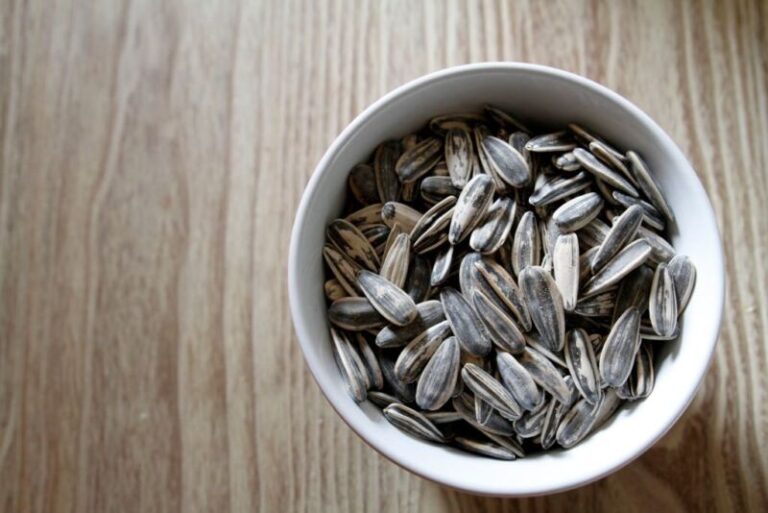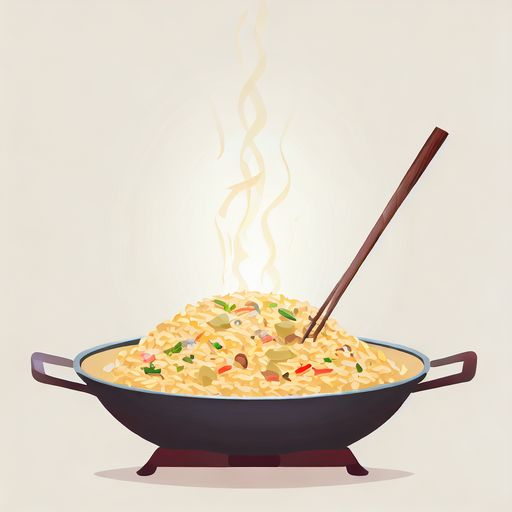What Are White Spots on My Dry Pasta?
Pasta is a pantry staple enjoyed around the world. The hard, dry texture allows it to keep for a long shelf life. However, pasta is still susceptible to spoilage if stored improperly. White spots on dry pasta are often the first indicator that something is amiss. But what do those specks signify and what should you do if you notice them in your pasta?
First, don’t panic. White spots alone do not definitively mean the pasta has gone bad. There are several possible explanations for white flecks on dry pasta:
- Exposure to light causing color loss
- Physical damage during handling
- Mold spores from improper storage
- Incompletely hydrated flour particles
Later in this article, I’ll explore these causes in greater detail and offer guidance on determining if your pasta is still safe to eat. I’ll also provide tips to prevent white spots and other signs of spoilage when storing dry pasta.
What Are Those White Spots on My Dry Pasta?
Seeing strange white flecks on your dry spaghetti or penne can be puzzling. What are those spots, and should you be concerned about eating pasta that isn’t uniformly yellow? Here’s a look at some of the most common reasons white spots appear.
Incompletely Hydrated Flour
This harmless cause of white spots occurs during the pasta manufacturing process. All dry pasta starts with a simple mixture of flour and water. Cheaper pasta brands often don’t hydrate the flour mixture thoroughly, leaving tiny spots of dry flour visible on the surface of the finished product.
While unsightly, these white specks are perfectly safe to eat. They simply indicate lower quality pasta. The flour will absorb moisture during cooking.
Physical Damage
Rough handling like dropping a box or accidental compression can cause tiny fractures and flakes in dry pasta. This physical damage exposes the white flour inside the pasta shape.
Exposed flour from damage during transportation or packaging leads to white spots but does not make the pasta unsafe to consume. The white spots from physical fractures differ in shape and placement from mold growth.
Color Loss
Over time on the shelf, pasta can gradually lose its vibrant yellow hue. This color loss occurs more quickly if the pasta is exposed to light. Irregular light exposure can bleach out patches on the pasta, leaving white spots behind.
While no longer as visually appealing, this color-faded pasta is still good to eat as long as it hasn’t passed its expiration date. Check for other signs of staleness like a cardboard-like texture.
Presence of Mold Spores
This is the most concerning potential cause of white flecks on dry pasta. Under certain environmental conditions, dry pasta can develop mold growth. Mold thrives in damp, humid environments with inadequate air circulation.
While mold on pasta is uncommon, it is possible if the storage conditions are poor. I’ll go into detail later about how to prevent mold growth through proper storage methods.
Can Dry Pasta Grow Mold?
Mold growth may not seem likely on a rock-hard box of dry spaghetti. But under certain circumstances, conditions can be right for mold.
Mold Requires Moisture
Dry pasta’s low moisture content makes it unlikely to support mold growth. But pasta stored in a humid environment may absorb enough ambient moisture to allow mold to take root in tiny crevices.
Any wet spots from condensation in an inadequately sealed container can provide a foothold for mold. Visible mold growth will appear fuzzy or discolored, unlike the uniform white spots caused by other factors.
Improper Storage Leads to Mold
Environmental conditions are the key factor determining if dry pasta will mold. Storage in a damp basement or humid cabinet allows mold spores to thrive. Direct heat and sunlight also encourage mold growth.
To discourage mold, keep pasta in a cool, dry place in its original packaging. An added layer of protection like a sealed container helps block light and moisture. Follow the recommended storage guidelines on the package.
Is Moldy Pasta Dangerous?
Finding fuzzy mold growth on food always warrants discarding it. But is it actually harmful to ingest mold accidentally?
Mold releases spores that can cause illness. Consuming pasta contaminated with mold puts you at risk for:
- Allergic reactions like sinus congestion, rashes, or breathing issues
- Asthma attacks if you have a mold allergy
- Fungal infection in people with compromised immunity
- Toxic effects from mycotoxins that some molds release
Severe reactions are infrequent but mold exposure should always be avoided. Out of caution, discard any pasta you suspect is moldy.
Keeping Pasta Fresh with Proper Storage
Prevent moldy pasta and other signs of spoilage by storing dry pasta correctly. Follow these guidelines for maximizing shelf life:
Cool and Dry
Choose a storage spot that is cool and dry without excessive humidity. Pantries or cupboards away from heat and moisture sources are ideal.
Sealed Containers
After opening the packaging, transfer pasta to an airtight plastic container or resealable bag. This prevents air and humidity from entering and keeps pests out.
Avoid Light Exposure
Direct sunlight and bright light can accelerate color fading and staleness. Store pasta away from light sources and use opaque containers.
Check Expiration Dates
Discard boxes that are past the “best by” date printed on the packaging. Eating expired pasta isn’t dangerous but favors mold growth.
Following these storage rules prevents mold growth and maintains pasta’s signature taste and texture.
What To Do If You Find White Spots
Discovering those mysterious white flecks on your precious pasta can be upsetting. Here’s how to evaluate if your pasta is still safe to eat:
Examine the Spots
First, scrutinize the spots closely. Uniform white specks are more likely harmless hydrated flour or color loss. Fuzzy spots concentrated in one area may indicate mold.
Check For Other Signs
Inspect for off smells, sliminess, or grayish discoloration which denotes spoilage. If the pasta maintains its proper odor and texture, white spots alone are not a definite sign it has gone bad.
When in Doubt, Throw it Out
If the white spots concern you and you can’t confirm they are harmless, discard the pasta. Don’t risk eating moldy pasta. Fresh pasta is inexpensive and easy to replace.
Maintaining High Quality and Flavor
Proper storage prevents mold and keeps pasta tasting great. Here are some other tips for maintaining optimum quality:
Use By Expiration Date
For best flavor and texture, use dry pasta within 2 years of the “best by” date. Eating expired pasta poses no health risks but the quality declines over time.
Leave Packaging Intact
Keep pasta in the original packaging until you are ready to cook it. This protects it from moisture, contaminants, and pests.
Cook Thoroughly
Avoid a gummy pasta texture by cooking until al dente in generously salted boiling water. Rinse in cold water to stop cooking.
Sauce for Flavor
Enhance the flavor of pasta with zesty sauces. Add herbs, garlic, spices, cheese, or other ingredients to dress up basic pasta.
Checking for Spoilage in Cooked Pasta
While this article has focused on dry pasta, mold and bacterial growth can also occur in cooked pasta over time. Here’s how to tell if leftover pasta has spoiled:
Refrigerate Promptly
Prevent bacterial growth by refrigerating cooked pasta within 2 hours. Do not leave pasta unrefrigerated for longer.
Look for Changes
Inspect refrigerated pasta within 3-5 days. Signs of spoilage include color changes, sliminess, sour odors, or mold.
Discard When In Doubt
Do not taste pasta that shows odd textures, colors or scents. Play it safe and throw away questionable leftovers.
Conclusion
Encountering white spots on your dry pasta can be puzzling and concerning. But in many instances, the spots are harmless results of physical damage or flour particles. To prevent mold growth, store pasta properly in a cool, dry place in its original packaging. Monitor for changes in smell, appearance and texture. Discard pasta at the first sign of mold or other spoilage. With proper storage and handling, you can keep pasta fresh and enjoy this versatile staple for months past the purchase date.






